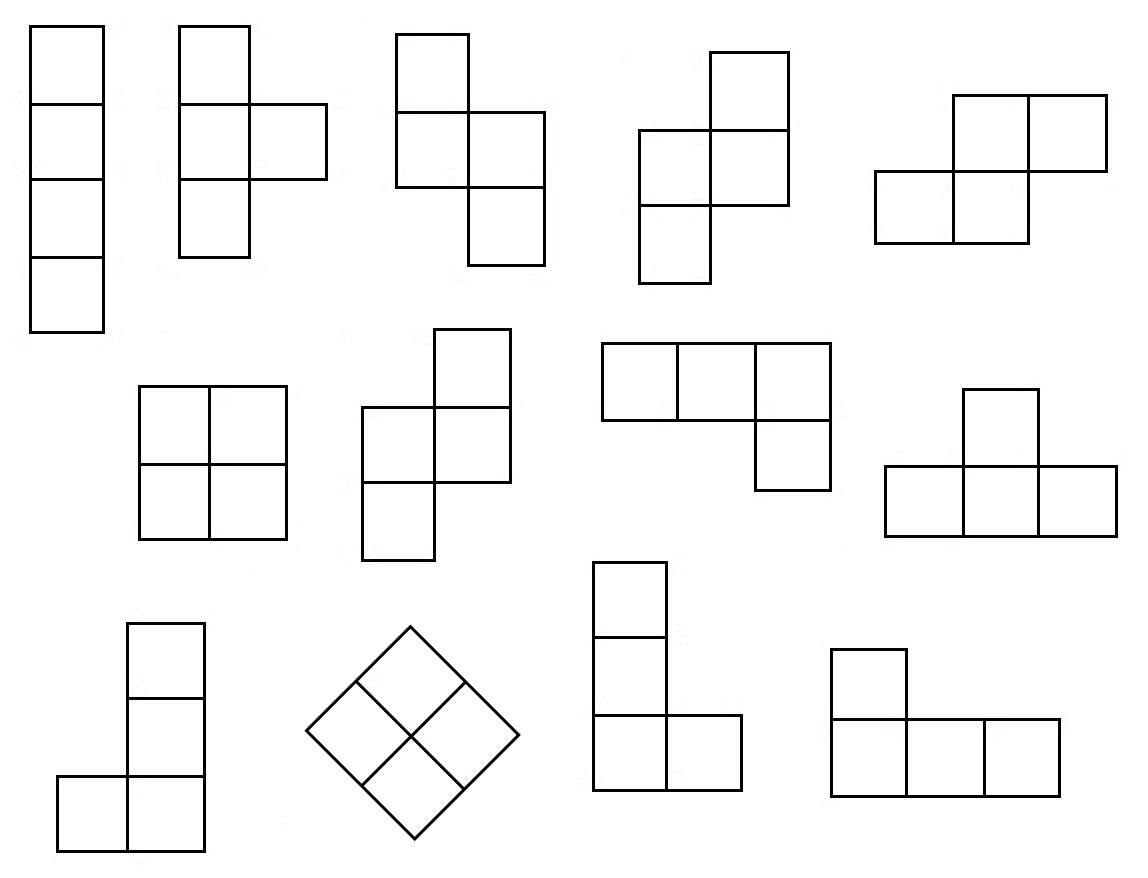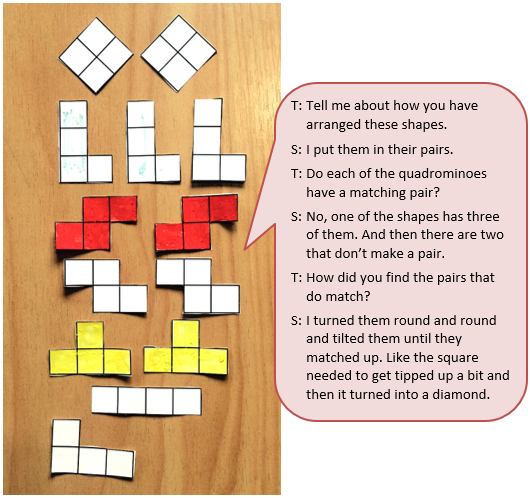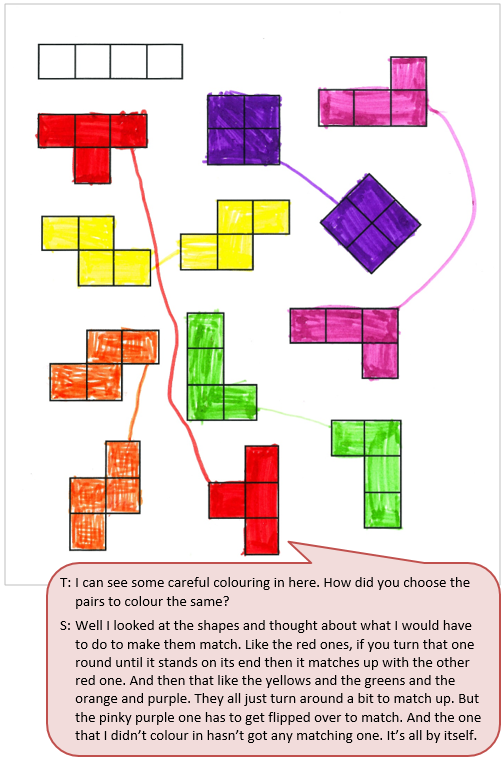The purpose of this activity is to engage students in finding similarities and differences between shapes.
This activity assumes the students have experience in the following areas:
- Comparing shapes by features such as corners, sides (edges), size, colour, symmetry, etc.
- Recognising features of shapes that change or do not change as the shapes are translated (shifted), reflected, rotated (turned), and enlarged.
- Identifying similar shapes that are in different orientations.
The problem is sufficiently open ended to allow the students freedom of choice in their approach. It may be scaffolded with guidance that leads to a solution, and/or the students might be given the opportunity to solve the problem independently.
The example responses at the end of the resource give an indication of the kind of response to expect from students who approach the problem in particular ways.

Each of these shapes is made from four squares.
Which ones are the same?
How do you know they are the same?
Note to teacher: The quadrominoes could be given as images on a worksheet or as moveable objects cut from card.
The following prompts illustrate how this activity can be structured around the phases of the Mathematics Investigation Cycle.
Make sense
Introduce the problem. Allow ākonga time to read it and discuss in pairs or small groups.
- What do you think the problem is about?
- What information has been given?
- How have the shapes been made? (Four square with meeting sides are important criteria.)
- Could you make a quadromino that is not there? How?
- What do you need to do to solve the problem?
- Can you rephrase the problem in your own words?
Plan approach
Discuss ideas about how to solve the problem. Emphasise that for now you want ākonga to say how they would solve the problem, not to actually solve it.
- What strategies can you use to get started?
- Can you cut out copies of the shapes so you can move them?
- What different ways can you move the shapes? (Student may not realise that the quadrominoes can be flipped (reflected) as well as moved and turned.)
- Are you able to imagine moving the shapes without doing it?
- Are there any pairs of shapes that you can immediately see are the same?
- What makes those shapes easy to spot?
Take action
Allow ākonga time to work through their strategy, and find a solution to the problem.
- Can you work step-by-step starting with the easiest shapes first?
- Have you tried flipping shapes as well as turning them? Does that make any difference?
- Are you sure that you have tried all the ways to move the shapes, so they look like others?
- How can you make sure that you haven't missed any pairs of shapes? What is your system?
- For shapes that don’t have a buddy, how can you check they are unique (one of a kind)?
Convince yourself and others
- Allow ākonga time to check their answers and then either have them pair share with other groups or ask for volunteers to share their solution with the class.
- Have you clearly shown what you have worked out?
- Can you justify why shapes belong in the same pair?
- Can you justify why shapes do not belong in the same pair?
- How do you know that you have found all of the matching shapes?
- Can you make a shape that matches the ‘lonely’ shapes but doesn’t look the same at first glance?
- What might you do differently next time?
Examples of work
Work sample 1
The student matches quadrominoes that are similar by physically moving the shapes.
Click on the image to enlarge it. Click again to close.
The conceptual approach
The student matches quadrominoes that are similar by mentally moving and rotating the shapes.

